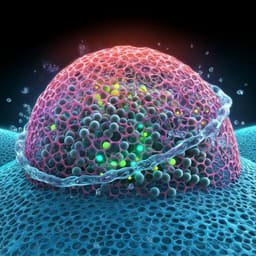
Environmental Studies and Forestry
Harnessing air-water interface to generate interfacial ROS for ultrafast environmental remediation
R. Xie, K. Guo, et al.
This groundbreaking study explores how an innovative amphiphilic single-Co-atom catalyst can dramatically enhance the generation of reactive oxidative species at the air-water interface. Conducted by Ruijie Xie and colleagues, the findings reveal a 20-fold increase in sulfate radicals, promising significant advancements in environmental remediation strategies.
Playback language: English
Related Publications
Explore these studies to deepen your understanding of the subject.







